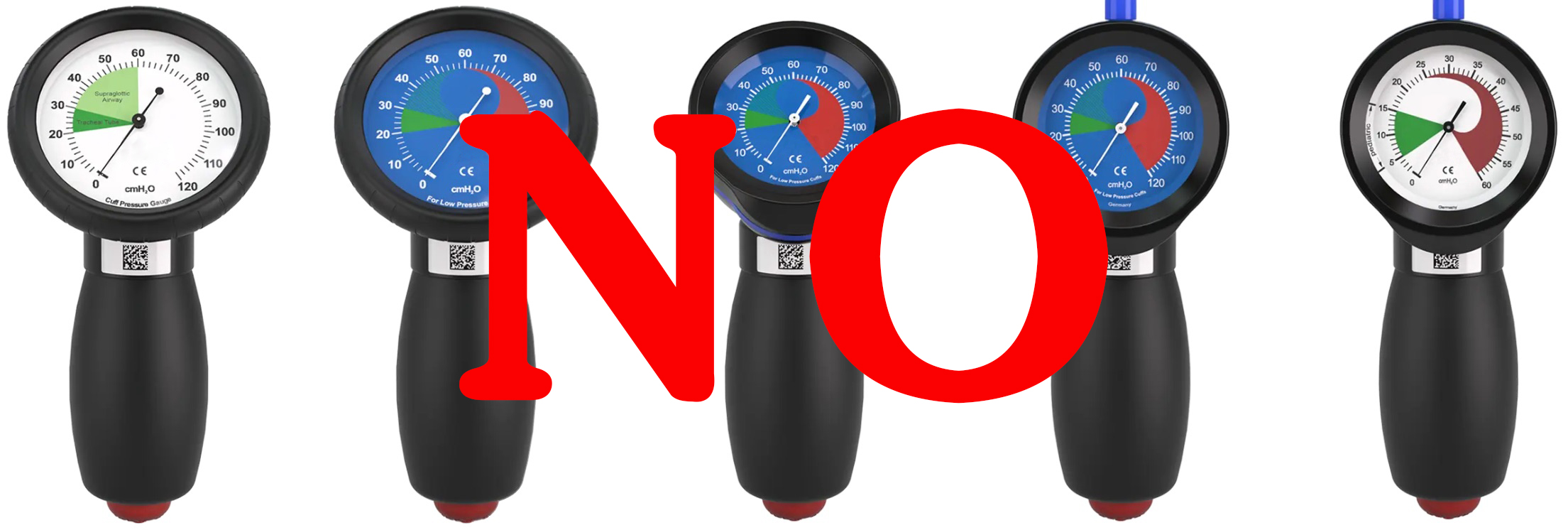Maintaining optimal cuff pressure is crucial to prevent complications like tracheal injury (from overinflation) or aspiration (from underinflation). Continuous monitoring cuff pressure are necessary in clinical practice.
Routine checking paractice also cause problems!!!
Routine checking practices can sometimes cause problems in the ICU or operating room. By guidlines maintaining optimal cuff pressure requires doctors or nurses to check and adjust the cuff pressure with a gauge every one to two hours. However, during the connection and disconnection process, there can be leakage and pressure rebalance issues, which may lead to a sudden drop in pressure, particularly with small-sized cuffs. This often necessitates reinflating the cuff with a gauge, which can increase the risk of Ventilator-Associated Pneumonia (VAP). The sudden drop in pressure or the fluctuating pressure during reinflation can provoke airway reactions. Consequently, frequent manual maintenance may not always be necessary. The gauge might show low pressure simply due to leakage or pressure rebalancing between the cuff and the gauge's balloon system. Therefore, continuous monitoring devices would be highly beneficial in clinical settings.

Other factors that can influence cuff pressure also necessitate continuous monitoring:
1. Positioning of the Patient: Changes in a patient’s position (e.g., from supine to lateral or prone) can affect tracheal anatomy and thus alter cuff pressure.
2. Changes in Airway or Lung Compliance: Variations in the patient's lung or airway compliance due to conditions like pulmonary edema, atelectasis, or mechanical ventilation settings can impact cuff pressure.
3. Nitrous Oxide Use: Nitrous oxide, used during anesthesia, diffuses into the cuff more rapidly than oxygen, which can increase cuff pressure significantly.
4. Movement of the Tube: Accidental movement or displacement of the ETT can result in a shift in cuff position, causing pressure changes.
5. Positive Pressure Ventilation: High levels of positive pressure ventilation can increase tracheal pressure, thereby affecting the cuff.
6. Altitude Changes: Transporting patients to different altitudes (e.g., air transport in helicopters or planes) can affect cuff pressure due to changes in atmospheric pressure, leading to expansion of the air in the cuff.
7. Secretion Accumulation: Secretions accumulating around the cuff may create pressure imbalances, as they can increase resistance in the trachea and cause small shifts in cuff pressure.
8. Tracheal Edema or Swelling: Post-intubation tracheal edema or tissue swelling can lead to external pressure changes around the cuff, potentially increasing or decreasing the cuff pressure.
9. Mechanical Ventilation Mode: Different ventilation modes and settings (like high tidal volumes or excessive inspiratory pressures) may cause variations in tracheal pressure and cuff pressure chage.
10. Muscle Tone and Anesthesia: The depth of anesthesia or use of muscle relaxants can impact the tone of the airway and surrounding structures, possibly leading to changes in cuff pressure as airway dynamics shift.
11. Humidity and Fluid Shifts: Humidification of inspired gases and changes in patient hydration status can cause small changes in tracheal mucosal thickness, affecting the cuff’s fit and pressure.
We chat
